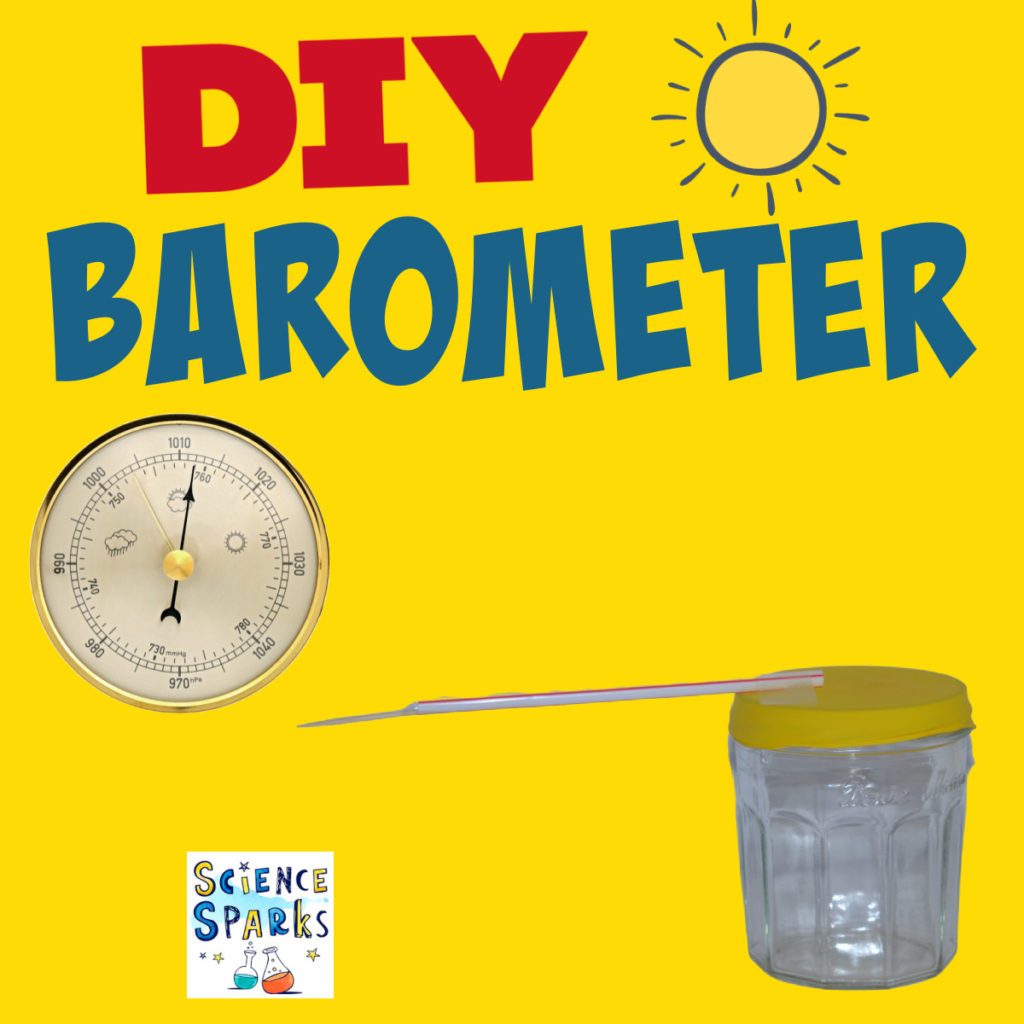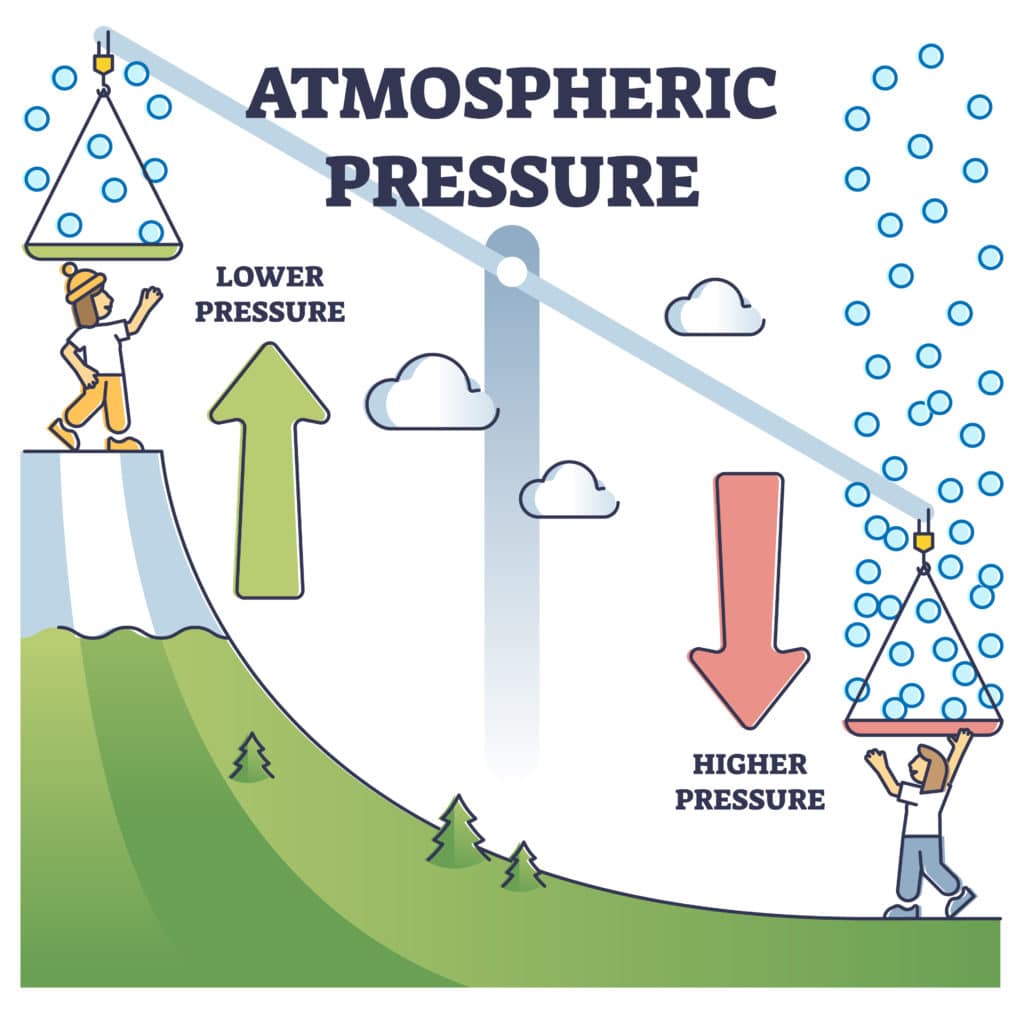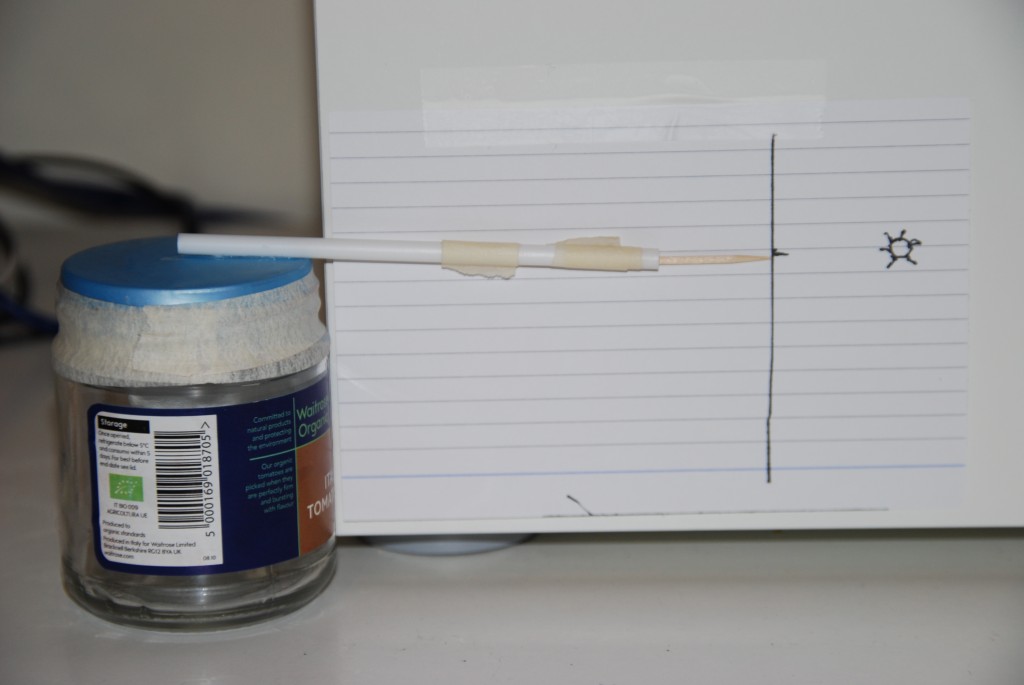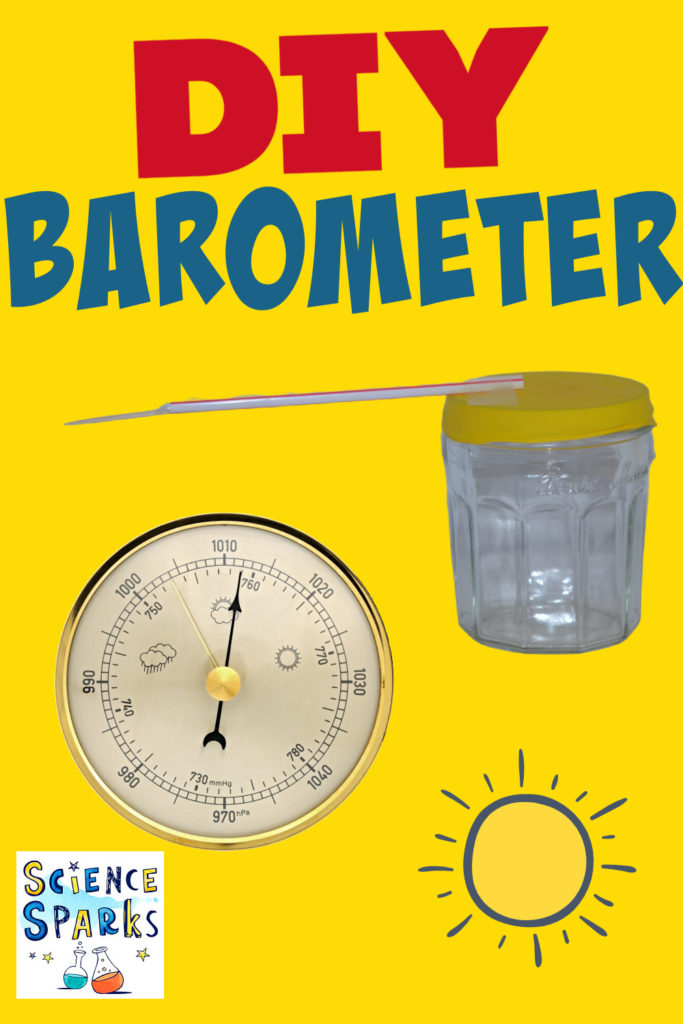This mini science investigation shows you how to make a DIY barometer to measure air pressure. Air pressure can be used to predict the weather and is one of many factors used by meteorologists.
What does low or high pressure mean for the weather?
Low pressure usually means wet, cloudy, rainy weather while high pressure is an indicator of dry and cool weather.

Barometers are used to measure atmospheric pressure.
What is atmospheric pressure?
The Earth has a layer of air surrounding it. This air has weight and presses down the Earth. At higher altitudes the air is thinner so air pressure is lower.

To make a barometer you will need
Jar or coffee can
Elastic band
Pin or cocktail stick
Tape
Glue
Straw
Paper
How to make a barometer

Blow up the balloon a little bit, the more air in the balloon, the greater the pressure outwards which is what makes the balloon blow up.
Let the air out of the balloon and cut the tie end off.
Stretch the balloon tightly over the jar or can and either tape or use the elastic band to fix it tightly.
Tape or glue the end of the straw to the centre of the balloon and tape the pin or cocktail stick to the end.
Tape some card behind the barometer and mark where the pin is.
Leave for a few days and note any changes. Record what the weather is like each day and note how it affects the barometer.

How does the DIY barometer work?
Warm air expands and rises, lowering the pressure of the air on the ground below. Cold air is heavier, it sinks and presses down on the ground forming a high pressure area.
The higher the air pressure the more air presses down on the balloon, pushing it into the jar and making the straw rise.
More weather activities for kids
Did you know you can make a weather station using pine cones?
Find out how movement of hot and cold air causes a sea breeze.
Find out what shape a raindrop really is.
Or, try one of my other weather science experiments for kids.
Science concepts
air pressure
atmospheric pressure

Last Updated on September 16, 2022 by Emma Vanstone

I didn’t realize it would be so easy to make one.
It was very simple! Let us know if you try it. xx
Now I need to remember what high / low pressure means . . .
🙂 check out out air pressure post with the eggs 🙂
Wow. Really that easy? Goes to show that science doesn’t have to be hard to be fun!
Thanks as always for linking to Kids Get Crafty!
Maggy